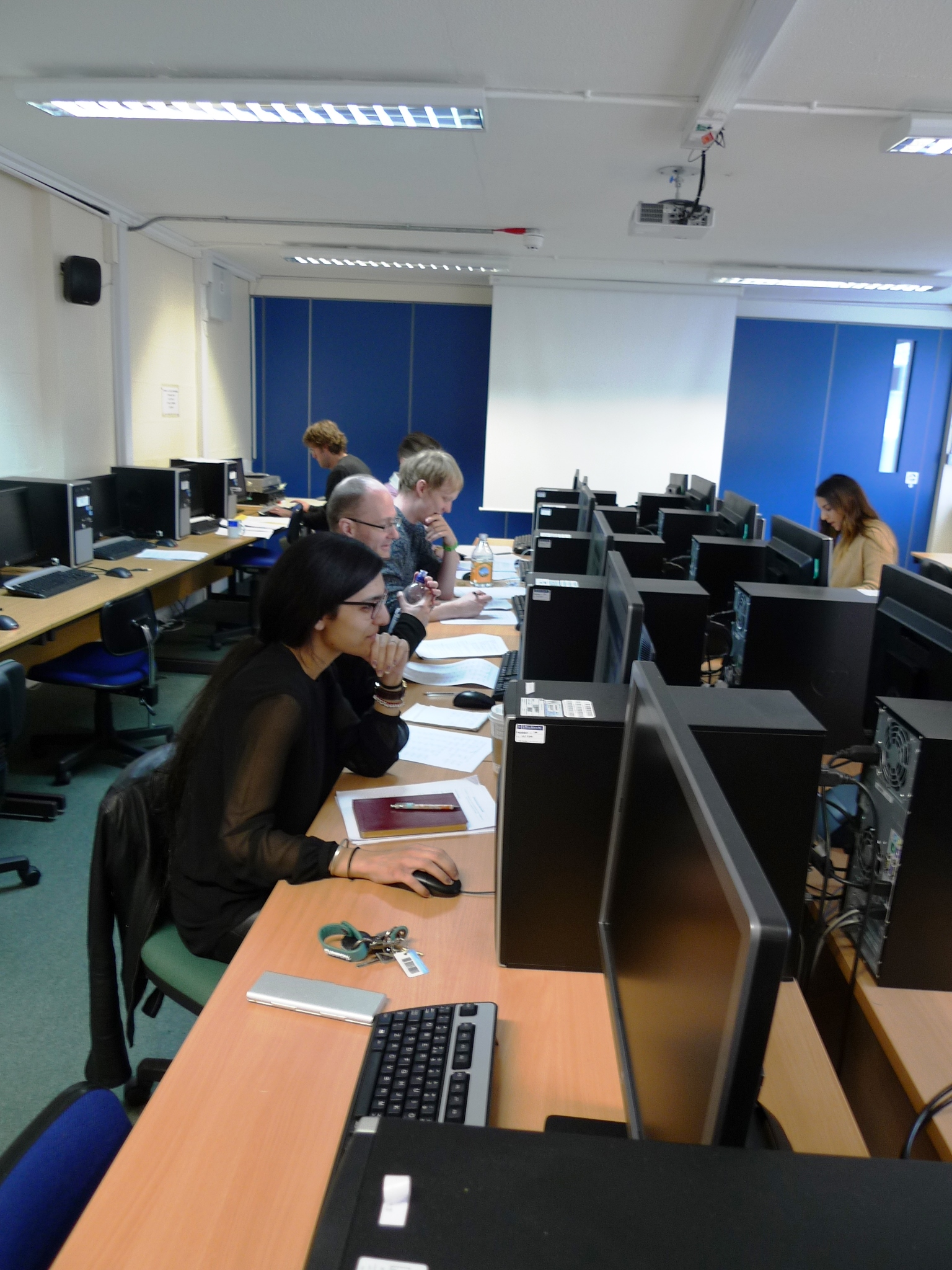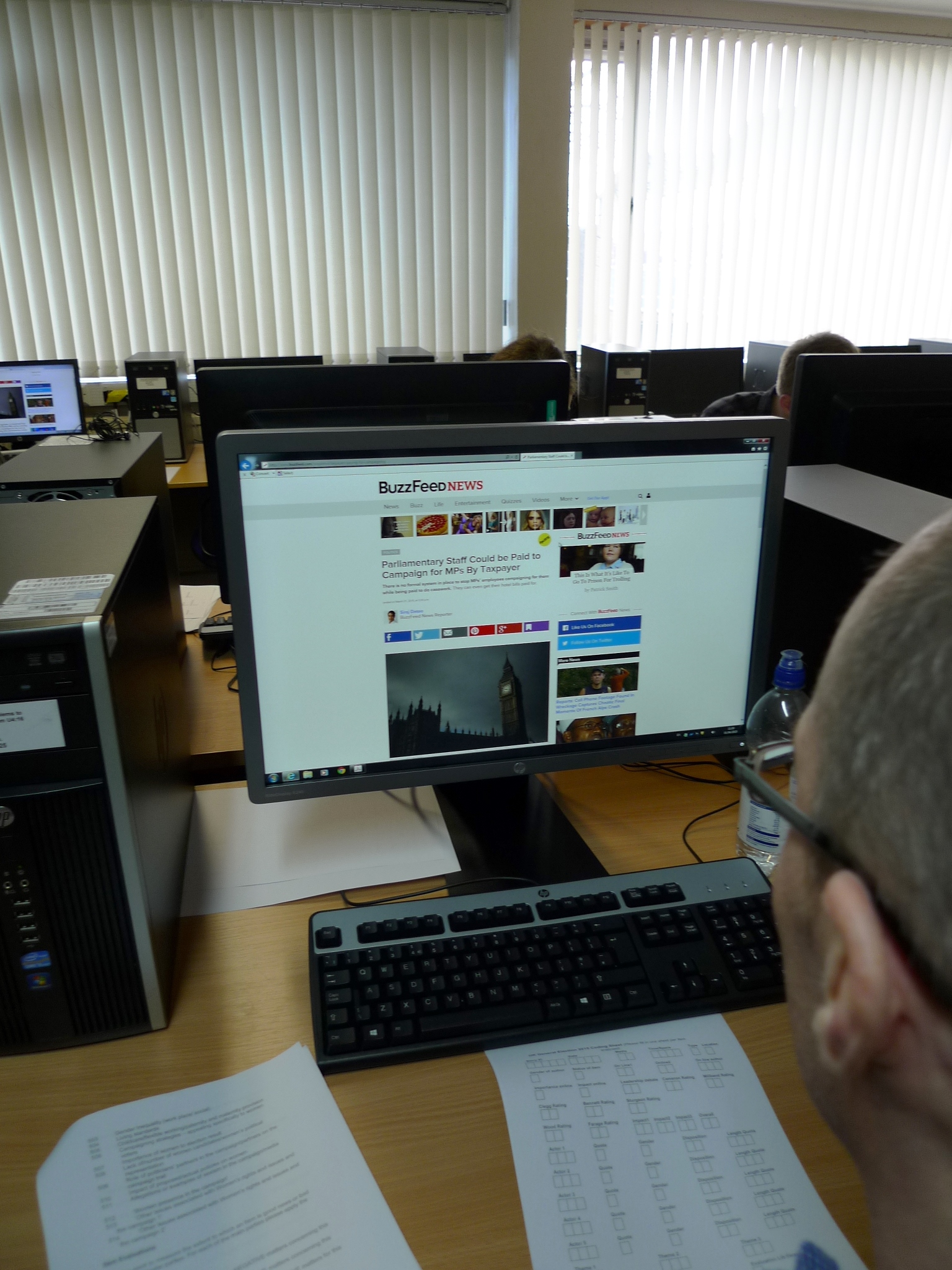Methodology
News Coverage of the 2017 UK General Election
Who funds us?
The Centre for Research in Communication and Culture’s analysis of national news coverage of the 2017 General Election is funded by Loughborough University.
Our methods
Our weekly ‘real-time’ news audits present statistical evidence about trends in national television and print news outlets throughout the campaign. These measures are based on scrutiny and coding of news content by our research team. This approach has two key advantages over automated coding of web content:
- Analysis of published and broadcast news reports (rather than their web equivalents) remains the most robust indication of the editorial values and priorities of news organisations, because of the greater space limitations and greater competition for editorial presence.
2. Non-automated coding of news is the most reliable way for capturing more complex themes and evaluations in news reporting. (NB Inter-coder reliability checks have been conducted for all measures.)
What we code
We code any ‘item’ in our sample frame that makes a clear reference to the 2017 UK General Election. We define an ‘item’ as follows:
(For Television)
An item begins the moment a newsreader or presenter introduces a topic. In most cases, this will then lead into a filed report from a journalist or an interview. The item ends either when: (1) The programme returns to the reader or presenter after the conclusion of the filed report/ interview, or (2) another filed report, clearly authored by a different journalist, segues onto the end of the first report.
(For Newspapers)
In the main, items have their own headline. However, there may be occasions when a separate article has been tagged on to the end of another. On these occasions, it they are deemed as separate items.
Our Sample
We code all relevant editorial content in TV programmes sampled (see below). For newspapers we code all election related news items that appear: on the front page, the first two pages of the domestic news section, the first two pages of any specialist section assigned to the coverage of the campaign and the pages containing and facing papers’ leader editorials.
Sampling commences on 5 May 2017. Our sample focuses on weekday election news coverage in:
UK-wide Television News
Channel 4 News 7-8pm; Five News Tonight 6.30-7pm; Sky News 8-8.30pm; BBC1 10-10.30pm; ITV 10-10.30pm;
UK-Wide Newspapers
The Guardian, The I, The Daily Telegraph, The Times, The Financial Times, The Daily Mail, The Daily Express, The Mirror, The Sun, The Star.
News Coverage of the 2016 EU Referendum
Who funds us?
The Centre for Research in Communication and Culture’s analysis of national news coverage of the 2016 EU Referendum Election is funded by Loughborough University.
Our methods
Our weekly ‘real-time’ news audits present statistical evidence about trends in national television and print news outlets throughout the campaign. These measures are based on scrutiny and coding of news content by our research team. This approach has two key advantages over automated coding of web content:
1. Analysis of published and broadcast news reports (rather than their web equivalents) remains the most robust indication of the editorial values and priorities of news organisations, because of the greater space limitations and greater competition for editorial presence.
2. Non-automated coding of news is the most reliable way for capturing more complex themes and evaluations in news reporting. (NB Inter-coder reliability checks have been conducted for all measures.)
What we code
We code any ‘item’ in our sample frame that makes a clear reference to the 2016 EU Referendum. We define an ‘item’ as follows:
(For Television)
An item begins the moment a newsreader or presenter introduces a topic. In most cases, this will then lead into a filed report from a journalist or an interview. The item ends either when: (1) The programme returns to the reader or presenter after the conclusion of the filed report/ interview, or (2) another filed report, clearly authored by a different journalist, segues onto the end of the first report.
(For Newspapers)
In the main, items have their own headline. However, there may be occasions when a separate article has been tagged on to the end of another. On these occasions, it they are deemed as separate items.
Our Sample
We code all relevant editorial content in TV programmes sampled (see below). For newspapers we code all election related news items that appear: on the front page, the first two pages of the domestic news section, the first two pages of any specialist section assigned to the coverage of the campaign and the pages containing and facing papers’ leader editorials.
Sampling commences on 3 May 2016. Our sample focuses on weekday referendum news coverage in:
UK-wide Television News
Channel 4 News 6.30-7pm; Channel Five News 7-8pm; Sky News 8-8.30pm; BBC1 10-10.30pm; ITV 10-10.30pm; UK-Wide Newspapers
The Guardian, The I, The Daily Telegraph, The Times, The Financial Times, The Daily Mail, The Daily Express, The Mirror, The Sun, The Star.
______________________________________________________________________________________________________________
2015 UK General Election News Analysis
Who funds us?
The Communication Research Centre’s analysis of the 2015 UK General Election is supported by funding from the British Academy and Leverhulme Trust (Grant reference SG142216) We have analysed the news reporting of every UK General Election since 1992. Among many other news audits, the research team have conducted three impartiality reviews for the BBC Trust and Board of Governors, investigating BBC Coverage of Rural Affairs (2013/14), the Arab Spring (2011/12) and the Israeli/ Palestinian conflict (2005/6).Our Methods
Our weekly ‘real-time’ news audits present statistical evidence about trends in national television, radio and print news outlets throughout the campaign. These measures are based on scrutiny and coding of news content by our research team. This approach has two key advantages over automated coding of web content:
1. Analysis of published and broadcast news reports (rather than their web equivalents) remains the most robust indication of the editorial values and priorities of news organisations, because of the greater space limitations and greater competition for editorial presence.
2. Non-automated coding of news is the most reliable way for capturing more complex themes and evaluations in news reporting. (NB Inter-coder reliability checks have been conducted for all measures.)
What we code
We code any ‘item’ in our sample frame that makes a clear reference to the 2015 UK General Election. We define an ‘item’ as follows:
(For Television and Radio)
An item begins the moment a newsreader or presenter introduces a topic. In most cases, this will then lead into a filed report from a journalist or an interview. The item ends either when: (1) The programme returns to the reader or presenter after the conclusion of the filed report/ interview, or (2) another filed report, clearly authored by a different journalist, segues onto the end of the first report.
(For Newspapers)
In the main, items have their own headline. However, there may be occasions when a separate article has been tagged on to the end of another. On these occasions, it they are deemed as separate items.
Our Sample Frame
We code all relevant editorial content in TV and Radio programmes sampled (see below). For newspapers we code all election related news items that appear: on the front page, the first two pages of the domestic news section, the first two pages of any specialist section assigned to the coverage of the campaign and the pages containing and facing papers’ leader editorials. For websites, we code the homepage only, identifying the ten most prominent election-focused news and commentary. The websites are ‘harvested’ at the same time of day throughout the campaign.
Sampling commences on 30 March 2015. Our sample focuses on weekday General Election news coverage in:
UK-wide Television News
Channel 4 News 6.30-7pm; Channel Five News 7-8pm; Sky News 8-8.30pm; BBC1 10-10.30pm; ITV 10-10.30pm; BBC 2 Newsnight 10.30-11.15pm
UK wide Radio
BBC R1 Newsbeat 5.45-6pm, BBC R4 Today 7.30-8.30am
Other National/ Regional TV
BBC1 East Midlands Today 6.30-7pm, ITV1 Regional News at Six 6-6.30pm,ITV1 Scotland 1800-1830, ITV1 Wales News 1800-1830
Other National/ Regional/ local radio
BBC Radio Nottingham 7.30-8.00 am, BBC Wales Today1830-1900, BBC Reporting Scotland 1830-1900, BBC Radio Good Morning Wales 07.30-08 00, BBC Radio Scotland 07.30-0800
UK-Wide Newspapers
The Guardian, The Independent, The Daily Telegraph, The Times, The Financial Times, The Daily Mail, The Daily Express, The Mirror, The Sun, The Star.
Other National/ Regional/ Local Newspapers
Daily Record, (Glasgow) Herald, Scotsman, The Scottish Sun, Derby Evening Telegraph, Nottingham Evening Post, Leicester Mercury, Lincolnshire Echo
Main News Websites
BBC Online, Guardian Online, Mail Online, Buzzfeed, Huffington Post.

